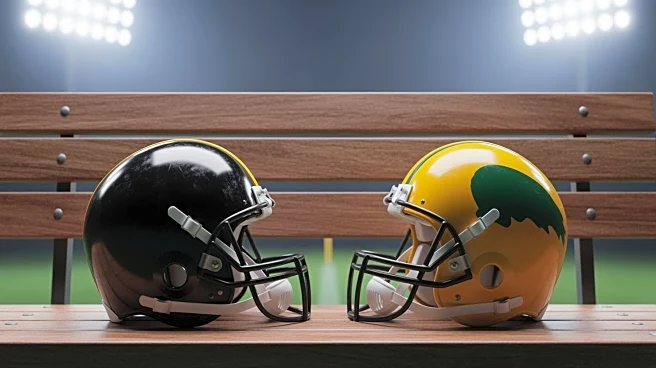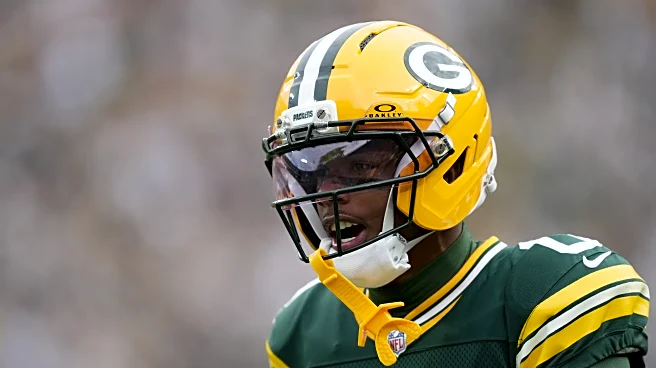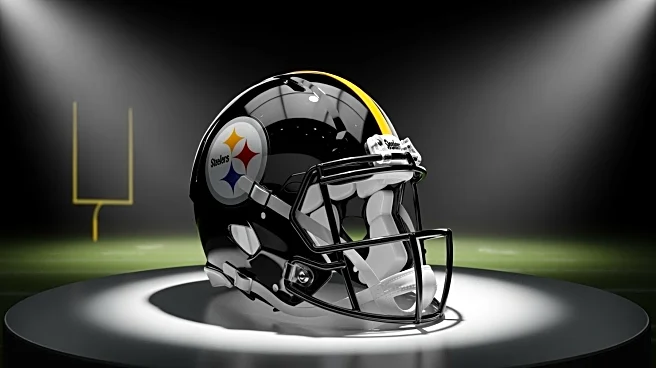What's Happening?
The Pittsburgh Steelers are set to wear their 1933 throwback uniforms in their Week 8 'Sunday Night Football' game against the Green Bay Packers. These uniforms, referred to as the '1933 Throwback Uniforms,'
feature a gold jersey with black stripes and large white block letters trimmed in black. The ensemble includes a gold matte helmet with a gray facemask and a black stripe, complemented by beige pants. The City of Pittsburgh crest is prominently displayed on the left shoulder of the jersey, symbolizing the team's connection to the city. Steelers players have expressed enthusiasm about the uniforms, with Alex Highsmith highlighting the excitement of showcasing them during a primetime game.
Why It's Important?
The Steelers' decision to wear throwback uniforms underscores the importance of tradition and heritage in sports. By honoring their historical roots, the team strengthens its brand identity and fosters a deeper connection with fans. This initiative can enhance fan engagement and loyalty, potentially leading to increased merchandise sales and heightened interest in the team's games. The primetime debut of these uniforms provides a national platform for celebrating the team's legacy, which can boost viewership and generate positive publicity for the franchise.
What's Next?
After the debut of the throwback uniforms, the Steelers will likely evaluate the response from fans and players to gauge the success of this initiative. Positive reactions could encourage the team to incorporate throwback elements more frequently in their uniform designs. Additionally, the Steelers may explore other historical aspects to integrate into their branding, further solidifying their connection to Pittsburgh's cultural heritage. The team's performance in these uniforms could also influence their future use, as a successful game might cement their place in the Steelers' uniform rotation.
Beyond the Headlines
The Steelers' use of throwback uniforms reflects a broader trend in sports where teams leverage nostalgia to connect with fans. This strategy taps into cultural and emotional ties, fostering a sense of community and shared history. It also raises questions about the balance between tradition and innovation in sports branding, as teams navigate the challenge of honoring their past while appealing to modern audiences. The Steelers' initiative may inspire other teams to explore similar strategies, potentially leading to a resurgence of historical elements in sports apparel.













